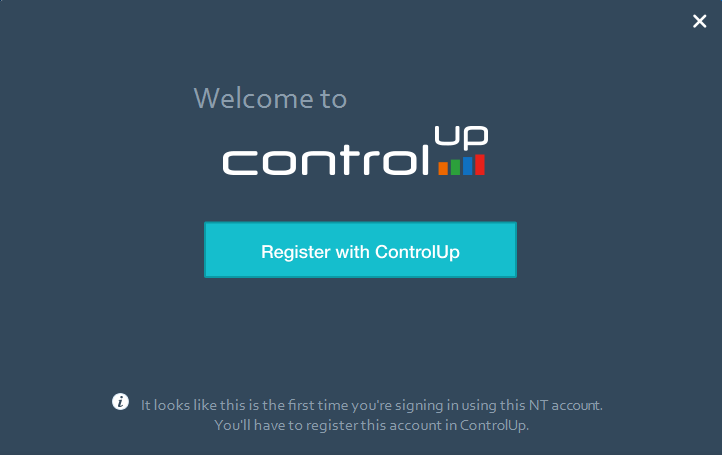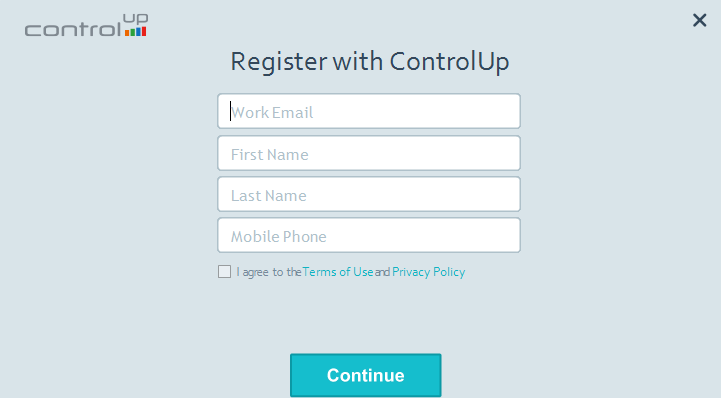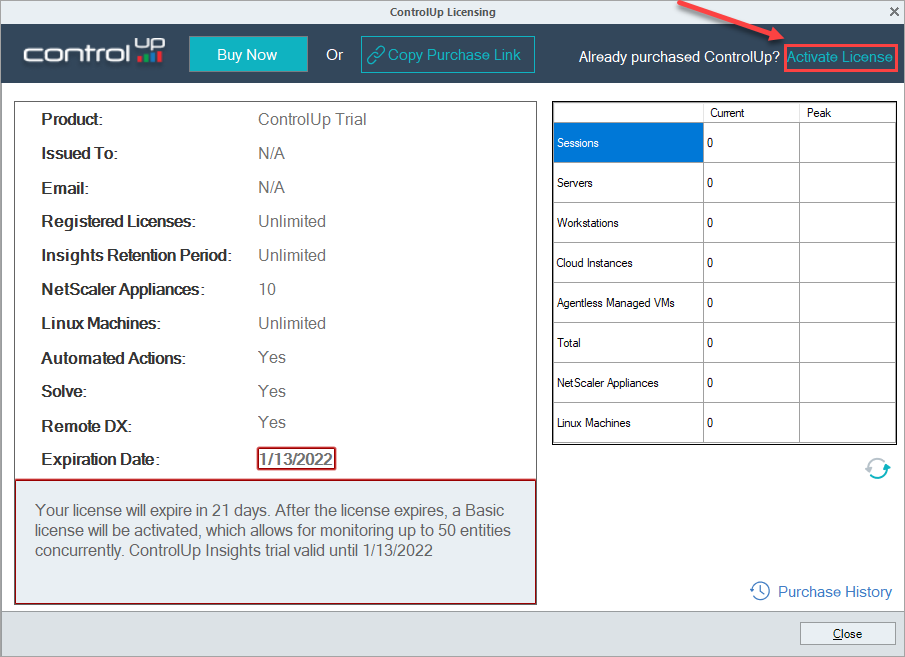- Print
- DarkLight
- PDF
First Steps for ControlUp for VDI & DaaS
- Print
- DarkLight
- PDF
After you have created your ControlUp organization, follow this article to set up your ControlUp for VDI & DaaS environment.
Download the Real-Time Console
- Download the ControlUp Real-Time Console here.
- Unzip the file.
- Run ControlUpConsole.exe to open the configuration wizard.
Sign in with your account
After you open the console, click Register with ControlUp.

Enter the details for the account that you previously created in app.controlup.com and used to create your ControlUp organization. Click Continue.

Confirm that your email is correct, and click OK.
Enter the one-time passcode sent to your email address and click Continue.
Sign in to your organization
Select the organization that you previously created in app.controlup.com and click Continue.

The user that creates a ControlUp organization is called the organization owner and is the only user who can initially manage user access. The most senior member of your team who regularly uses ControlUp should create your ControlUp organization. For more information about organization ownership, see Add Users to ControlUp and Manage Login Access.
Activate Your License
After you create a ControlUp organization, you can use a free 21-day trial of ControlUp. If you already purchased a ControlUp license, activate your license.
To activate your license:
- In the console, go to Help > About > Licensing.
- Click Activate License.

- Enter your activation code and click Activate Online.
Your license activates and updates the license details.
Configure your environment
You can now connect your resources to ControlUp. To configure your environment, perform the following steps:
Prerequisites
Verify that your environment is ready for ControlUp according to the following prerequisites:
- Hardware / Software Prerequisites
- Network requirements (US Region)
- Network requirements (EU Region)
- Sizing Guidelines
1. Add Machines
Connect physical and virtual machines to ControlUp by installing the ControlUp Agent on the machines. To learn how to add machines, see Connect to Your Machines.
You can create folders in your ControlUp organization tree to organize the machines that you add. To learn how to create folders, see Create Folders.
2. Create Shared Credentials
When any ControlUp component connects to a resource that requires authentication, such as hypervisors, EUC environments, or cloud environments, the same set of credentials must be used by each ControlUp component. We recommend that you add credentials to ControlUp and share them so that all ControlUp users in your organization can use the same credentials.
To learn how to add shared credentials, see Configuring Shared Credentials.
The credentials you use to connect resources to ControlUp require specific permissions depending on the resource. You should create a service account for each resource with the permissions listed in User Permissions in ControlUp.
3. Add a Monitor
Setting up a monitor allows you to continously monitor your ControlUp environment. You need at least one monitor to be able to access the web UI and the VDI view in ControlUp's new DEX platform.
To learn how to install and configure your monitor machines, see ControlUp Monitor.
Make sure you install the ControlUp Agent on each monitor machine.
4. Configure a Dedicated Data Collector
A Data Collector increases the performance capabilities of both your console and monitor when collecting metrics from external sources such as VMware vCenter, Citrix Delivery Controllers, XenServer Pool Masters, AHV Clusters, and ADC appliances.
A Data Collector can be any machine that has the ControlUp Agent installed. To learn more about Data Collectors, see ControlUp Data Collector.
5. Add Hypervisors
Monitor and manage your virtualization infrastructure by connecting to VMware vSphere, Citrix Hypervisor, Nutanix AHV, or Microsoft Hyper-V.
To learn how to add add hypervisors, see Connect to Your Hypervisors.
6. Add EUC Environments
For details on how to add a connection for each type of EUC environment, and what you can monitor, see the following articles:
7. Add Cloud Environments
ControlUp comes with built-in support for Azure and AWS monitoring.
8. Add an ADC Appliance
To learn how to add Citrix ADC to your ControlUp environment, see Add an Application Delivery Controller.
Next Steps
After you set up your ControlUp environment and connect all your resources, follow the next steps to effectively use ControlUp:




